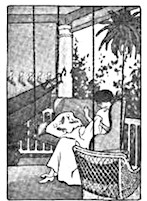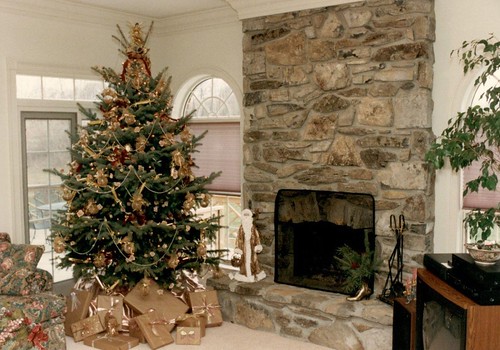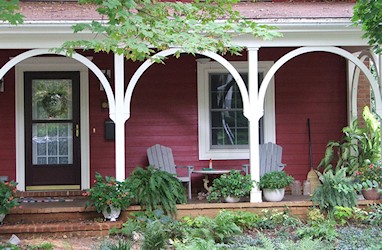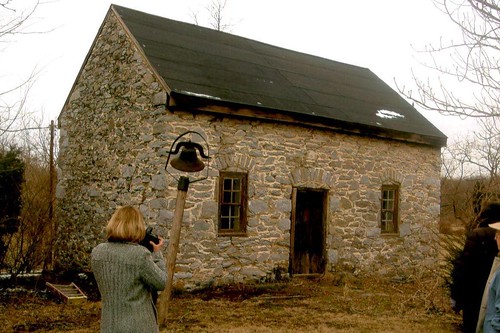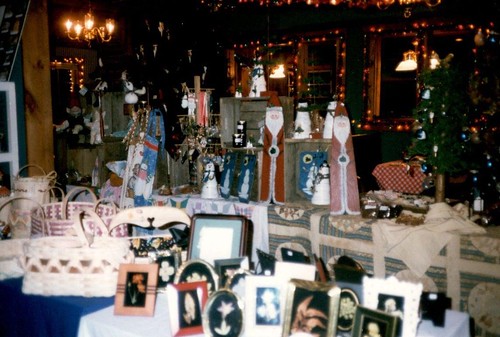For those who have been following the conditional use permit for 501 North Loudoun Street, you probably know the issue went to Winchester City Council for a final vote on Tuesday, and Ms. Darby has received her permit, the first step in opening a pizza parlor in a former gas station. The editorial in the Winchester Star on Thursday, however, had a baffling conclusion asking where the preservationists were.
The answer is all around you. Anyone who has ever had the urge to put a new business in an old building, felt the urge to save a building falling on hard times, experienced anguish seeing a wrecking ball looming, lamented when the loss or alteration of a tangible place will impact the way we think of and remember a location in the future, is a preservationist at heart. It is especially important to recognize this in May, National Preservation Month, when we come together to celebrate places that matter to us. These places do not need to be architectural jewels steeped in the history of two hundred years. Often our most personally meaningful places are these small buildings with neighborhood connections and modest architecture – but a lot of heart and memories.
Last year, the National Trust for Historic Preservation conducted a survey to see what kind of preservationists were out in the world, quietly working on saving historic and cultural objects and memories. While unscientific, a surprisingly large 19% of respondents were pegged as an “accidental preservationist,” or someone who fell into the this world just by the desire to reuse old spaces for new uses. Even more, at 36%, identified as a “people preservationist,” oriented on the smaller stories and community they are based in to make sure history is remembered and remains relevant. Not all – very few, in fact – polled as a “vocal preservationist” who is confident enough to share opinions publicly on a regular basis, as you would do at a City Council meeting.
The current PHW board was divided as the community had been over the issue, and after we did our due diligence we wrote a letter of support for the CUP to City Council and the Mayor ahead of the May 9 vote. While we were unable to attend and read our statement at the public hearing, we will reprint it here for those curious of our rationale:
“Preservation of Historic Winchester would like to express our support for the conditional use permit for the proposed adaptive reuse of the former gas station at 501 North Loudoun Street. This former Conoco station (circa 1930) has recently become a contributing structure in Winchester’s National Register Historic District by meeting the new, expanded period of significance. Unlike other recent past structures in Winchester that may be perceived as not harmonizing with its neighbors, this building has always had a sense of belonging. It is a charming Tudor Revival-style inspired gas station that, like Bonnie Blue in the former Esso station on Boscawen Street, could lend itself to a successful eatery utilized by neighbors and visitors alike.
“PHW is concerned that should the request from Karen Darby be deemed inappropriate, the building will continue to stand empty until, as a last resort, the entire building is lost. This does not have to happen. From our conversations with Karen Darby, we are assured she will do her utmost to bring a thriving business back to this corner of the Historic District. Her interest in utilizing historic tax credits bodes well for the final product becoming not just a business success story, but a historic preservation success story.”
Much of PHW’s work is like this: providing information, history, and the resources projects need to succeed; writing letters of support when a project is worthy; or even just taking some time to share history of Winchester and its buildings. We have been providing these services to Winchester for over fifty years to encourage the change in our historic district that impresses many people, residents and visitors alike. All of those positive changes were done by preservationists, working on one building at a time. Our own efforts in the Jennings Revolving Fund helped kickstart that movement, but it would not have succeeded without broad community support, not just in the moment when the publicity was high and exciting, but even now, thirty or more years later, through new owners taking over the stewardship of these buildings. Whenever you need a preservation organization to help, you can reach us at 540-667-3577 or phwinc.org@gmail.com. It is why we are here.
 Happy Friday! There are two events coming in June. First, on Saturday, June 3 at 10:30 a.m., the Clowser Foundation will have a memorial service at the Clowser cemetery (152 Tomahawk Trail, Winchester, VA 22602) for the massacre in which members of the Clowser family and other settlers were killed or taken prisoner by Delaware Indians in 1764, followed by a lease signing celebration. Please join them for this free event and help them start off their efforts to save the Clowser House.
Happy Friday! There are two events coming in June. First, on Saturday, June 3 at 10:30 a.m., the Clowser Foundation will have a memorial service at the Clowser cemetery (152 Tomahawk Trail, Winchester, VA 22602) for the massacre in which members of the Clowser family and other settlers were killed or taken prisoner by Delaware Indians in 1764, followed by a lease signing celebration. Please join them for this free event and help them start off their efforts to save the Clowser House. 